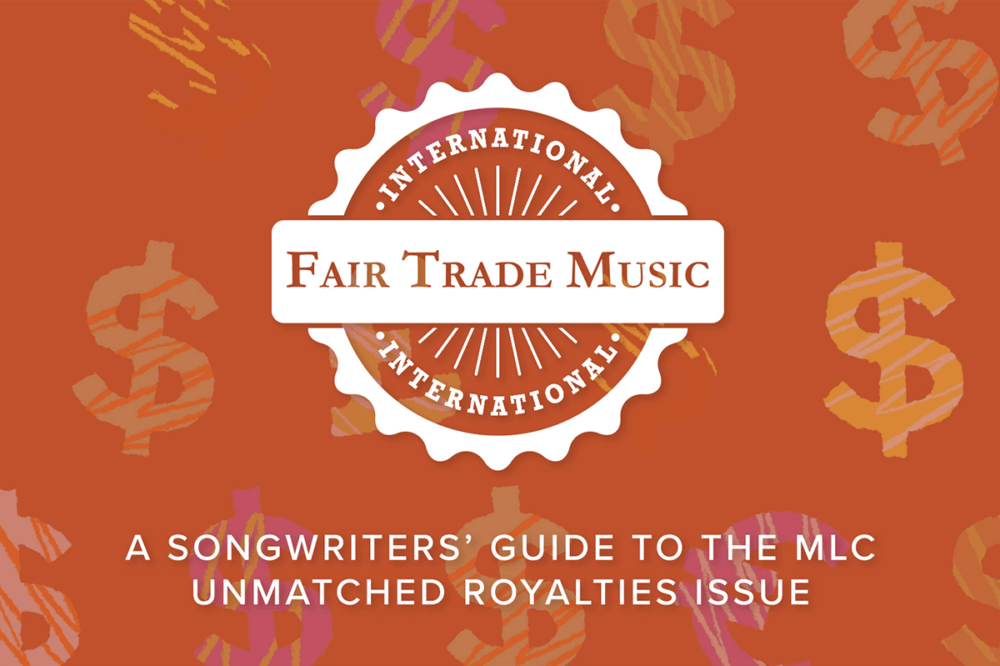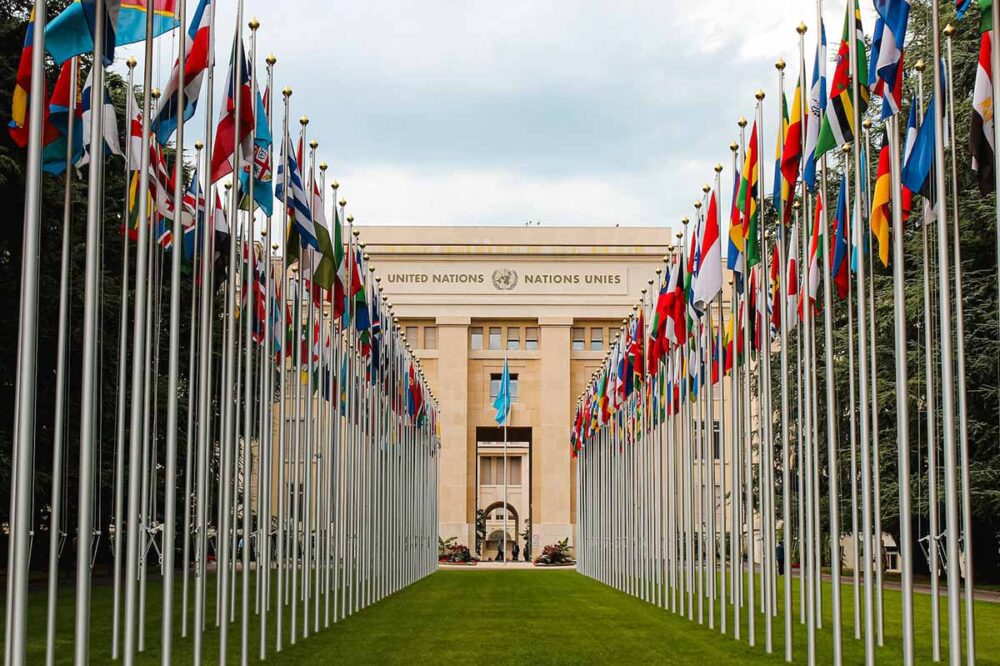A constantly eroding source of income.
The rate at which songwriters are remunerated for US mechanical royalties has traditionally been set at a fixed number of US cents per composition. This rate began at 2 cents per unit in 1909 and took almost a century to reach just 9.1 cents. Today, the effects of inflation alone have made prices around 30 times higher.
From 2006 to 2016, the US Copyright Royalty Board (CRB) held three rate–setting “Phonorecords” proceedings. In each, they opted to fix the royalty rate for physical music formats at this same 9.1 cents level.
These so called “Subpart B” formats included the fast-growing vinyl sector as well as CDs, permanent digital downloads and ringtones.
In 2021, the Phonorecords IV discussions began in order to set the Subpart B rate for the period 2023-2027. Music creators were dismayed to see the CRB engage in private negotiations with major record labels, music publishers and a lone songwriters group to once again freeze the mechanical rate.
Vinyl sales have increased 22% in the first half of 2022 alone and an equitable mechanical royalty rate is a lifeline for many songwriters; we need to address the hundred-year abuse of this royalty and bring transparency to its negotiation”
– Safwan Javed, songwriter and FTMI chair
There followed a year of campaigning by the Music Creators North America, its member organizations, Charles Sanders, Chris Castle, and individual songwriters including George Johnson. As a result, the CRB overturned the frozen mechanicals proposal in March 2022.
In May, a counter proposal was made by the majors, NMPA and NSAI to move the rate to 12 cents. Whilst enthusiastically supported by this group, many independent music creator groups have pointed out that inflation has already overtaken this figure.
A three point proposal to address this issue, keep future pace with inflation and increase the involvement of songwriters in CRB proceedings was subsequently submitted by the independent music creator groups groups.
History of US mechanical rate setting
The establishment of a compulsory mechanical rights licensing system, and the setting of a statutory mechanical royalty rate has its roots in the US Copyright Act of 1909. Section 1 (e) of that law provided that once a musical composition had been distributed for the first time on a sound carrier in the US, any other party (i.e., a record company) was free to make and distribute its own recorded version of such composition so long as they:
- Abided by the formalities set forth in the law
- Paid a total of 2 cents for each unit of each composition distributed.
In many experts view, this agreement began one of the most notorious miscarriages of economic justice in the history of the international music industry.
1909: Zero increase for 70 years
Between 1909 and 1978, the tiny US record industry had grown into a multi-million dollar, multi-national corporate entertainment empire that dominated the international music marketplace.
Despite this, the royalty rate for the music creators upon whose work the industry was based, remained frozen at two cents per composition. The US Consumer Price Index rose more than seven-fold during this period.
1976: US Copyright Act
Congress finally chose to raise the US statutory mechanical rate in 1978 under the “new” US Copyright Act of 1976. but only to 2.75 cents. Immediately thereafter, the record industry introduced and expanded the concept of the “controlled composition clause” into nearly every US recording contract.
The practical effect was to contractually freeze and then de–value the new US statutory mechanical royalty rate to 75% of its new level thereby driving it back down to two cents.
2006: Slow progress
The outcry from the US and global music creator community over the ensuing years eventually resulted in gradual rises in the statutory mechanical royalty rate. These were phased in every five years with some increases based upon negotiated cost of living increases.
Despite this hard-won campaigning, by 2006, the rate had reached just 9.1 cents per composition; a level with which we are still familiar today.
2016: Frozen for 15 years
The US Copyright Royalty Board held three rate–setting proceedings called Phonorecords I in 2006, Phonorecords II in 2011, and Phonorecords III in 2016. In each, they opted to “roll forward” the frozen 9.1 cent royalty rate relative to Subpart B covering physical music formats, permanent downloads and ringtones.
The royalty rate continued to be eroded by the effects of inflation, being already devalued by one third in real dollars since its implementation.
2021: Proposal to continue the freeze
In March 2021, the three major, multinational record conglomerates together with the US music publisher trade group (NMPA) and the Nashville Songwriters Association International (NSAI) filed a “Notice of Settlement in Principle” with the CRB as part of the new Phonorecord IV process.
This notice proposed the continued freezing of the mechanical rate at 9.1 cents until 2027.
2022: Proposal rejected
George Johnson, a songwriter participant in the proceedings, filed his objections to this proposal on April 19, 2021. He noted the unfairness of rolling forward the frozen Subpart B royalty rate and the substantial lack of transparency by the settling parties.
After a year of tireless lobbying by Johnson and the global songwriter community, the proposal was rejected by the CRB in March 2022.
Important note: These points are taken from the comments submitted to the Copyright Royalty Board by the Songwriters Guild of America, Inc., the Society of Composers & Lyricists, Music Creators North America, and the individual music creators Rick Carnes and Ashley Irwin on July 26, 2021. To read the complete document along with all legal references and the list of other supporting organization, click here.
2022 Update
In May 2022, the labels and publisher groups returned with a counter proposal to raise the mechanical royalty rate to 12 cents per composition. This was presented by the NMPA and NSAI as representing a “32% increase” in the subpart B mechanical royalty base rate with future CPI adjustments.
The effects of inflation
This however may present only one side of the equation. Independent music creators led by MCNA pointed out that the effects of inflation meant that the value of the frozen 9.1 cents rate was already at 13.1 cents at the time of this new proposal. Hence, by the time of any implementation in 2023, this proposal could actually provide 16-20% less in real value than the royalty rate implemented in 2006 and subsequently frozen for sixteen years.
The importance of transparent negotiation
These seemingly small modifications to the US mechanical royalty rate are likely to make tens of millions of dollars difference to songwriters. And as vinyl record sales increase 22% in the first half of 2022 alone, perhaps even more. In its July 1st comments to the CRB, MCNA noted that to its knowledge, “not a single independent music creator group was meaningfully consulted in the process of negotiation of the majors’ new proposal”. Transparency and inclusion are crucial.
The MNCA proposal
In partnership with the Songwriters Guild of America, the Society of Composers & Lyricists, and other international groups, MCNA presented a proposal to address the current stalemate. This was submitted for further consideration by the CRB with all changes based upon the Consumer Price Index for All Urban Consumers (U.S. City Average, all items) (CPI-U) published annually by the US Secretary of Labor.
1. Set a fair mechanical rate
Apply the government’s own cost of living increases from Sep 2006 to Nov 2022 to the 9.1 cent rate
2. Keep pace with inflation
Adjust the new royalty rate each subsequent year to reflect any cost of living changes
3. Give music creators a voice
Amend Chapter 8 of the US Copyright Act to expand the ability of interested music creator groups to more actively participate in CRB proceedings









